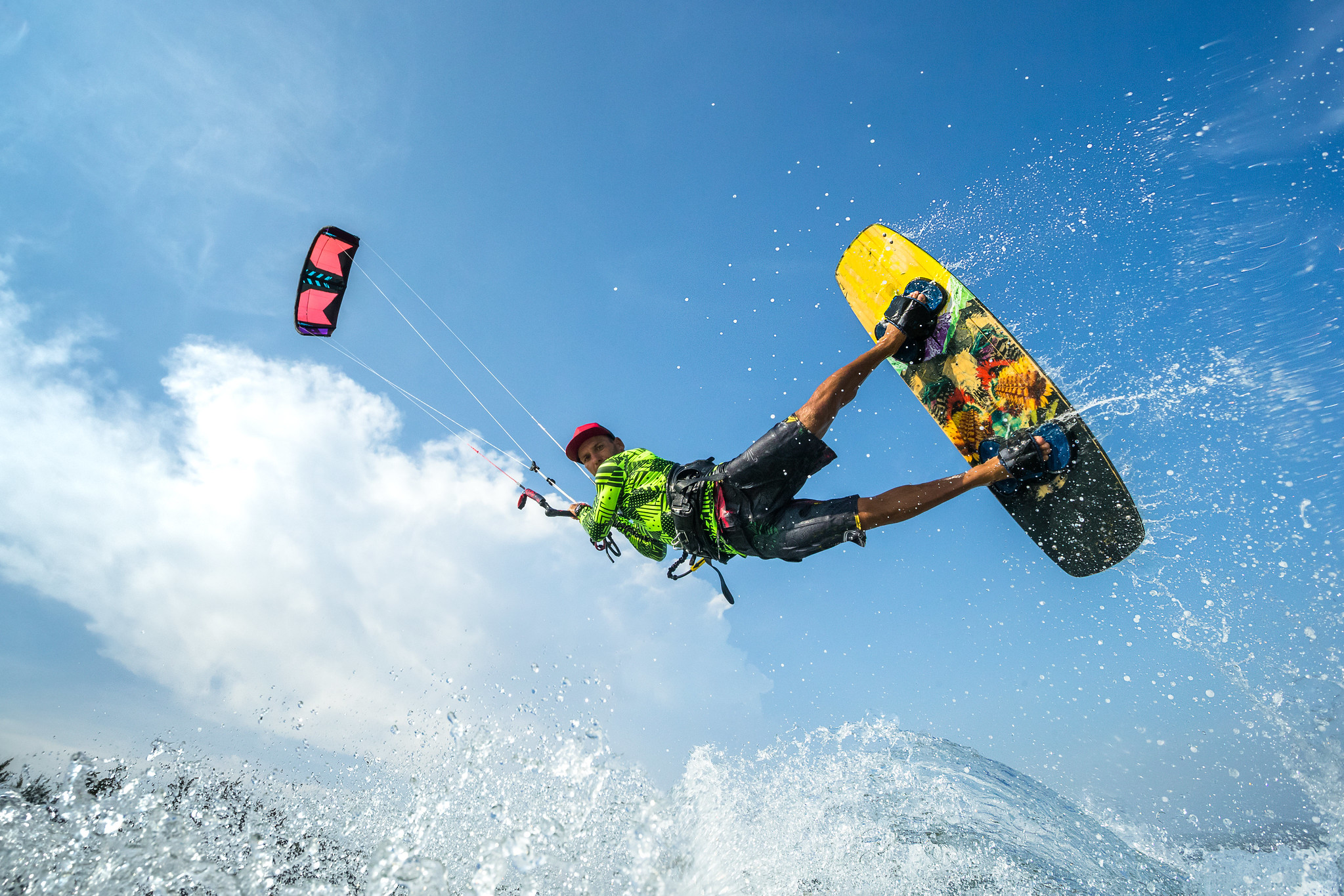Watersports offer excellent workout opportunities. Furthermore, the different activities you do across open waters are entertaining and exciting. Kitesurfing is one activity to note in that regard. But, it does beg the question: “What’s the difference between kitesurfing and kiteboarding?”
The Differences Between Kitesurfing And Kiteboarding
Kitesurfing is a sport wherein a person seemingly glides through the surface of the water using a board, which is being pulled by a power kite that is blown by the wind. By its name, many people assume that kitesurfing can only take place on the water. However, land-based kitesurfing is also possible. But, instead of a kiteboard, the user can use a skateboard or other similar pieces of equipment.
So, kitesurfing uses a board; does that make it the same with or different from kiteboarding?
The answer to that question is, “It depends.” Many countries, such as South Africa, Australia, and the USA, have different communities that refer to kitesurfing as kiteboarding. But, other regions, such as locales in the UK, refer to the sport as kitesurfing. You can also check out KitesurfingAdvice for the different uses of these two terms.
But, there are variations to these two activities that allow people to discern one term from the other. For example, some extreme kitesurfers don’t use boards when gliding across the surface of the water while being pulled by a power kite that’s attached to a harness.
Therefore, the difference between kitesurfing and kiteboarding depends on the context. For instance, if you’re talking about the water sport in general, then you may use kitesurfing. But, if you want to specify that the player uses a board to glide through the surface, then you may use the term kiteboarding.
Kiteboarding As A Land-Based Sport
As mentioned above, you might assume that kitesurfing is a water sport because of “surfing” in its name. But, kiteboarding can also be a land-based activity.
Some communities, like associations and groups in the UK, refer to kiteboarding as the “dry” version of kitesurfing. Instead of a kiteboard used on water, the athlete rides on a special board for land travel while being dragged by a power kite.
This particular kiteboard is akin to a skateboard with large wheels attached to its sides. The large wheels allow the board to give the board plenty of ground clearance for it to whizz across surfaces, like beaches and deserts.
Furthermore, the power kite used in land-based kiteboarding is different from water-based kitesurfing. Land kitesurfers use ram kites that tend to have a foil construction. This material is ideal for flying across the edges of wind windows because it weighs lighter than that of conventional kitesurfing kites.
Also, land kiteboarders don’t have to worry about their ram kites getting crushed by the waves, which can be a typical experience for many water-based kitesurfers. When the wind dies during land-based kitesurfing, the kite will float back to the surface. So, if the wind picks up again, the surfer can quickly relaunch the kite.
The Similarities Of Kitesurfing And Kiteboarding
Without a specific context, both kitesurfing and kiteboarding can refer to the water sports activity. But, that scenario may also depend on the person listening to the conversation. For example, if the person is from the USA, then the individual might assume that you’re talking about the water sport. However, if the person is from the UK, then, they might come to the conclusion that you’re talking about the land-based sport.
So, when you’re planning for a kitesurfing weekend, consider the environment of your preferred sports activity. You might be a practitioner of both land- and water-based versions of kiteboarding.
With that in mind, similarities exist between these two terms. For instance, both land- and water-based kitesurfing use distinct boards to glide through surfaces. Also, governing bodies exist to help regulate events and camaraderie among kitesurfers across the globe.
Furthermore, both sports require a learning curve before you can become a master at these activities. But, the difficulty of learning land- or water-based kiteboarding depends on the skill level of the person. Perhaps, you already have experience in surfing the waves of beaches and oceans. If so, then you might find it easier to master water kitesurfing than other individuals.
But, both sports activities require you to practice proper safety protocols. It’s going to be fun and games until you get an injury because you failed to maintain your gear.
Conclusion
In summary, kitesurfing and kiteboarding can be the same sports activity. But, differences exist based on the context. Kitesurfing might refer to the water-based exercise, whereas you can talk about kiteboarding as a land-based sport.

Yogi wanderer. Solitude searcher. Book worm and chill out music tripper.

